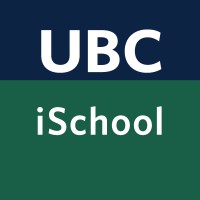| Note |
[Transcript] UBC
Reports
Volume 34 Number 4, February 25, 1988
The University of British Columbia, Vancouver, B.C., Canada
Breaking barriers
Natives face unique challenge
by Gavin Wilson
Renate Auger has her hands full as a third-
year law student and a single mother of six
children. Being a native Indian hasn't made
tackling a law degree any easier.
"I've probably seen the underbelly of the
beast more than most law students," she
admits.
Auger is one of about 150 native lndians
enroled at UBC, mostly in programs designed
to attract native students. A tightly knit and
mutually supportive group, they still face
struggles unknown to most other students.
"I've had some advantages, I guess," says
the 43-year-old mother of six daughters, aged
seven to 23. "But maybe I'm just unusually
pig-headed. I see it as a very special gift to be
able to raise so many future mothers. Maybe
it’s given me the courage to persevere."
Beverly Scow, a third-year Arts student
and president of the Native lndian Student
Union, says most native students on campus
come from reserves, where poverty, remote-
ness, alcohol problems and poor education
conspire to drive many young people away
from the opportunities of the classroom.
"The whole sociological background is not
good for education, for being an achiever," she
says. "The people who are here have broken
down a lot of barriers."
Scow’s own family has its pioneers. Her
uncle, UBC law graduate Judge Alfred Scow,
was the first native lndian in Canada called to
the bar and the first to sit on the bench.
Grandfather William Scow was president of
the Native Brotherhood in the 1950s when it
was a powerful voice for native rights.
UBC has programs in two faculties,
education and law, which encourage native
students with courses aimed at native
interests and, in the case of law, flexible entry
requirements.
The law school has graduated twice as
many natives as any other in the country,
including Atlin MLA Larry Guno.
But there can be a price to be paid. Law
student Mike McDonald, a Metis from
Manitoba, says it’s not easy for a native lndian
to adjust to the competitlive environment of a
faculty such as law.
"You have to adapt to a different way of
thinking, but you still have to remember who
you are. That’s the difficult part," he says.
Sam Stevens, a law instructor who heads
the native lndian law program, says it’s all uphill
for native students at university.
"It's like comparing a three or four mile run
to a marathon. They have to try harder."
Atthough law is a popular choice among
native students at UBC — 17 are currently
enroled — more than 100 are in education.
Others are enroled in nursing, computer
science and anthropology. There are 20
graduate students and about a dozen faculty
members who are native lndian.
The Native lndian Teacher Education
Program began in 1974 and has since
graduated 100 teachers.
Despite its success, native educator Verna
Kirkness says enrollment should be put into
perspective. If native lndians attended
university in proportion to their numbers in the
general population, there would be 1,200 here.
Kirkness is director of the First Nations
House of Learning, a campus body set up to
look at ways of increasing native enrollment
and broadening program and course offerings
in other faculties. Medicine, forestry and com-
merce are among those which have ex-
pressed interest.
But plans to give more access to post-
secondary education for native Indians come
at time when the federal government has
capped funding available for native education
bursaries.
The Native lndian Student Union is holding
a Native Awareness Week on campus,
beginning March 14.
UBC native lndian students Beverly Scow, president of the Native lndian Student
Union, and Ron Peigan, president of the Native Law Students Association of Canada
Photo by Warren Schmidt
|
